laravel入门
简介
作为php最常用的框架之一,laravel的框架目录布置得尤其清晰,适用于各种类型的项目开发。今天来记录下laravel入门需要熟悉的知识点。
1、根目录
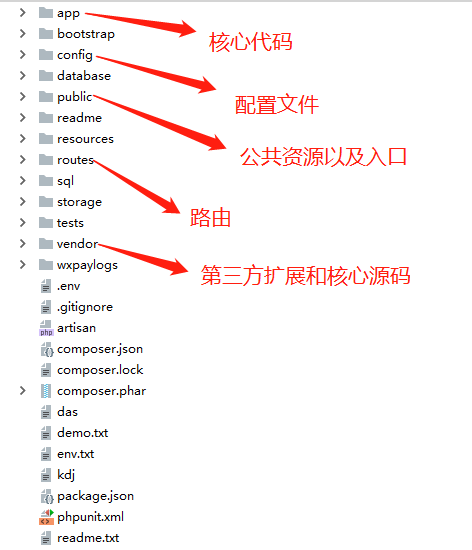
其中,public/index.php是项目的入口文件
2、配置
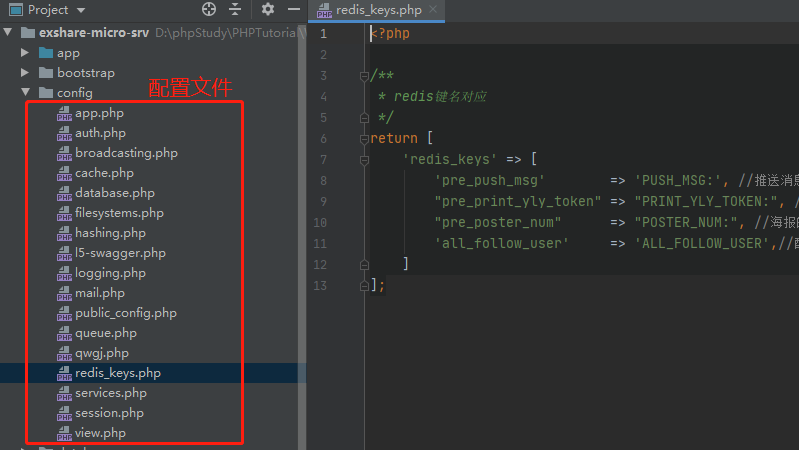
1)config目录
该文件夹下面,包含的是各种配置文件。包括mysql数据库连接信息,redis,自定义的配置文件信息等等
2).env文件
用以存储一些依赖环境的变量,比如数据库配置,因为它不会被加入到版本库中, 所以还用以配置一些敏感信息:比如正式环境的一些第三方应用账号,token 等。有点类似yii框架中的main-local.php
用法参考:env('db_host','192.168.1.223')
说明:优先使用.env文件中配置的db_host对应的值,如果.env中没有配置,则使用这里设置的默认值'192.168.1.223'
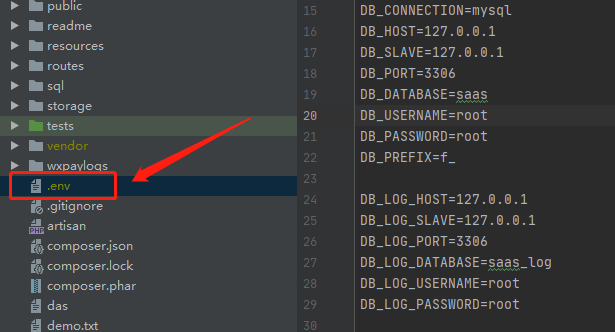
3)用法参考
config('redis_keys.redis_keys.all_follow_user')
3、mvc
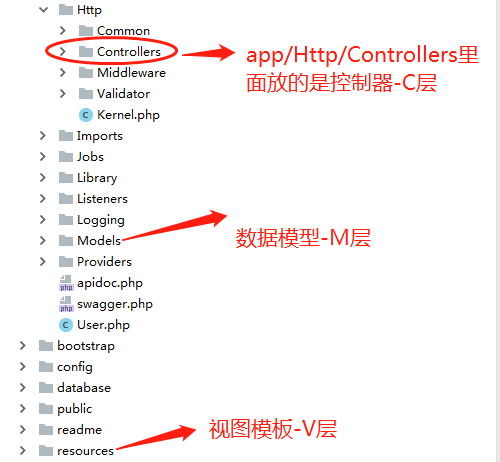
4、路由
1、routes目录
routes目录包含了应用定义的所有路由。laravel 默认提供了四个路由文件用于给不同的入口使用:web.php、api.php、 console.php 和 channels.php。 除此之外,我们还可以自定义路由文件。
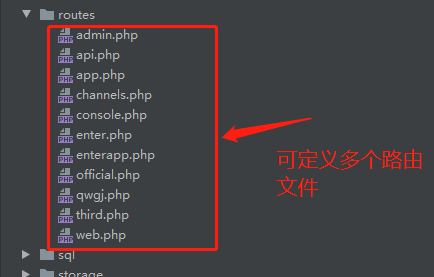
这里介绍两个比较重要的官方提供的默认路由文件web.php和api.php
1)web.php
文件包含的路由通过 routeserviceprovider 引入,都被约束在 web 中间件组中,因而支持 session、csrf 保护以及 cookie 加密功能,如果应用无需提供无状态的、restful 风格的 api,那么路由基本上都要定义在 web.php 文件中
2)api.php
文件包含的路由通过 routeserviceprovider 引入,都被约束在 api 中间件组中,因而支持频率限制功能,这些路由是无状态的,所以请求通过这些路由进入应用需要通过 token 进行认证并且不能访问 session 状态。
2、路由定义
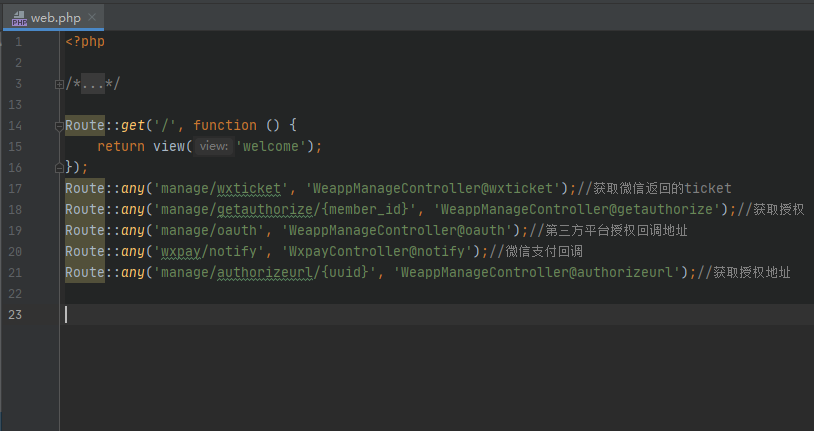
稍微复杂一点的情况:
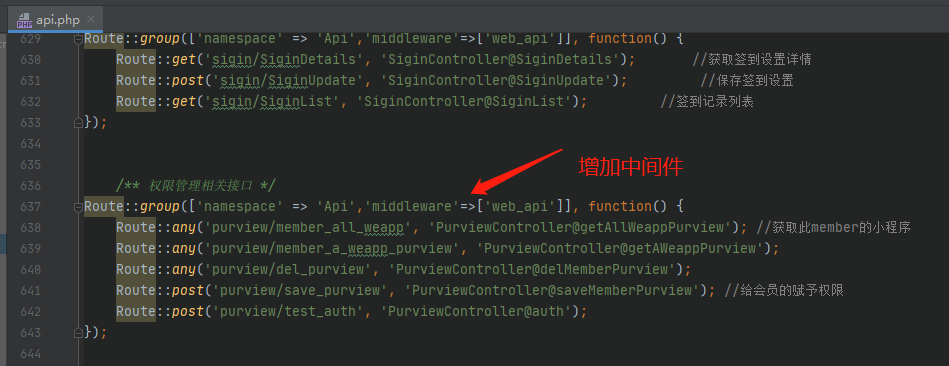
3、routeserviceprovider
文件包含的路由通过 routeserviceprovider 引入
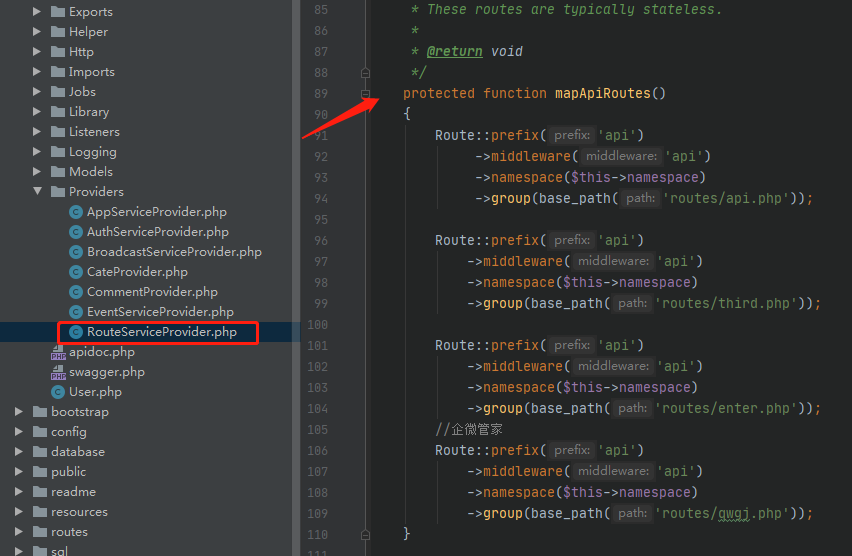
5、中间件
提到中间件,那一定离不开app/http/kernel.php这个文件
1) kernel
kernel 中定义了重要的中间件列表,所有的请求 request 在被应用处理前,都必须经过这些中间件,筛过一遍后,才会被决定如何处理。这涉及到中间件(middleware)的作用。
app\http\kernel
|
1
2
3
4
5
6
7
8
9
10
11
12
13
14
15
16
17
18
19
20
21
22
23
24
25
26
27
28
29
30
31
32
33
34
35
36
37
38
39
40
41
42
43
44
45
46
47
48
49
50
51
52
53
54
55
56
57
58
59
60
61
62
63
64
65
66
67
68
69
70
71
72
73
74
|
<?phpnamespace app\http;use illuminate\foundation\http\kernel as httpkernel;class kernel extends httpkernel{ /** * the application's global http middleware stack. * * these middleware are run during every request to your application. * * @var array */ protected $middleware = [ \app\http\middleware\checkformaintenancemode::class, \illuminate\foundation\http\middleware\validatepostsize::class, \app\http\middleware\trimstrings::class, \illuminate\foundation\http\middleware\convertemptystringstonull::class, \app\http\middleware\trustproxies::class, \app\http\middleware\enablecross::class, ]; /** * the application's route middleware groups. * * @var array */ protected $middlewaregroups = [ 'web' => [ \app\http\middleware\encryptcookies::class, \illuminate\cookie\middleware\addqueuedcookiestoresponse::class, \illuminate\session\middleware\startsession::class, // \illuminate\session\middleware\authenticatesession::class, \illuminate\view\middleware\shareerrorsfromsession::class, \app\http\middleware\verifycsrftoken::class, \illuminate\routing\middleware\substitutebindings::class, ], 'api' => [// 'throttle:300,1', 'bindings', ], 'web_api' => [// 'throttle:300,1', 'bindings', 'check_token' ], 'admin_api' => [// 'throttle:300,1', 'bindings', 'admin' ], ]; /** * the application's route middleware. * * these middleware may be assigned to groups or used individually. * * @var array */ protected $routemiddleware = [ 'auth' => \illuminate\auth\middleware\authenticate::class, 'auth.basic' => \illuminate\auth\middleware\authenticatewithbasicauth::class, 'bindings' => \illuminate\routing\middleware\substitutebindings::class, 'cache.headers' => \illuminate\http\middleware\setcacheheaders::class, 'can' => \illuminate\auth\middleware\authorize::class, 'guest' => \app\http\middleware\redirectifauthenticated::class, 'signed' => \illuminate\routing\middleware\validatesignature::class, 'throttle' => \illuminate\routing\middleware\throttlerequests::class, 'check_token' => \app\http\middleware\checktoken::class, ];} |
我们再看看app\http\kernel继承的父类illuminate\foundation\http\kernel
|
1
2
3
4
5
6
7
8
9
10
11
12
13
14
15
16
17
18
19
20
21
22
23
24
25
26
27
28
29
30
31
32
33
34
35
36
37
38
39
40
41
42
43
44
45
46
47
48
49
50
51
52
53
54
55
56
57
58
59
60
61
62
63
64
65
66
67
68
69
70
71
72
73
|
<?phpnamespace illuminate\foundation\http;use exception;use throwable;use illuminate\routing\router;use illuminate\routing\pipeline;use illuminate\support\facades\facade;use illuminate\contracts\debug\exceptionhandler;use illuminate\contracts\foundation\application;use illuminate\contracts\http\kernel as kernelcontract;use symfony\component\debug\exception\fatalthrowableerror;class kernel implements kernelcontract{ /** * the application implementation. * * @var \illuminate\contracts\foundation\application */ protected $app; /** * the router instance. * * @var \illuminate\routing\router */ protected $router; /** * the bootstrap classes for the application. * 引导类,起引导作用的类 * 这些类里面基本上都有一个 bootstrap(application $app) 方法, * 从不同的角度 bootstrap 应用。为最终 boot() 最准备。 * 注意:这些事做不完,不能接受请求,或许连$request都无法正确生成。 * @var array */ protected $bootstrappers = [ // 载入服务器环境变量(.env 文件?) \illuminate\foundation\bootstrap\loadenvironmentvariables::class, // 载入配置信息(config 目录?) \illuminate\foundation\bootstrap\loadconfiguration::class, // 配置如何处理异常 \illuminate\foundation\bootstrap\handleexceptions::class, // 注册 facades \illuminate\foundation\bootstrap\registerfacades::class, // 注册 providers \illuminate\foundation\bootstrap\registerproviders::class, // 启动 providers \illuminate\foundation\bootstrap\bootproviders::class, ]; /** * the application's middleware stack. * * @var array */ protected $middleware = []; /** * the application's route middleware groups. * * @var array */ protected $middlewaregroups = []; /** * the application's route middleware. * * @var array */ protected $routemiddleware = []; |
总之,kernel 做了两件事,第一个是定义 $bootstraps[],做好了 boot 系统的准备,第二个是定义 各种 middleware,这些都对 $request 进行加工、处理、甄选、判断,最终为可以形成正确的、有效的 $response 做准备,都完成后,进行了 index.php 中的 $kernel->handle($request),返回 $response。
总结:
1) $request ---> $kernel { service providers/middlewares/routers } ---> $response
2) kernel 是就是个大黑箱,送入请求,输出响应,我们只管往里面添加服务、中间件、路由等等。
2) middleware
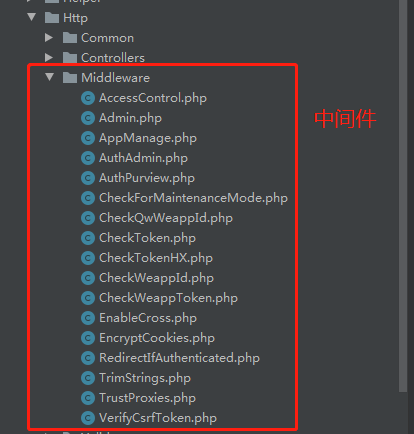
系统自带的verifycsrftoken.php
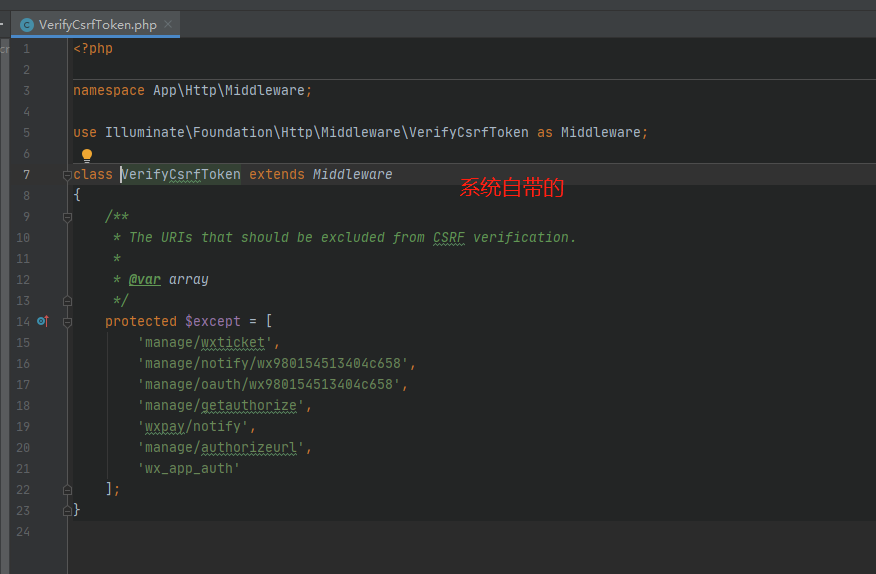
自定义的中间件checktoken.php
基本上中间件的具体过滤操作都在handle方法中完成
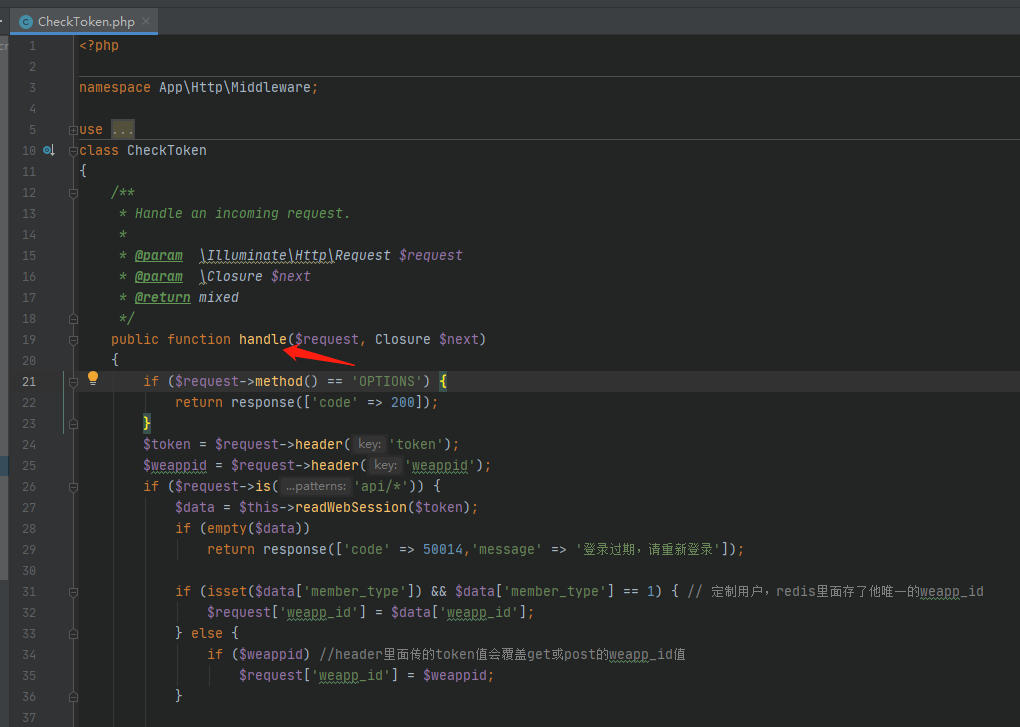
6、日志
1) 日志的配置文件:config/logging.php
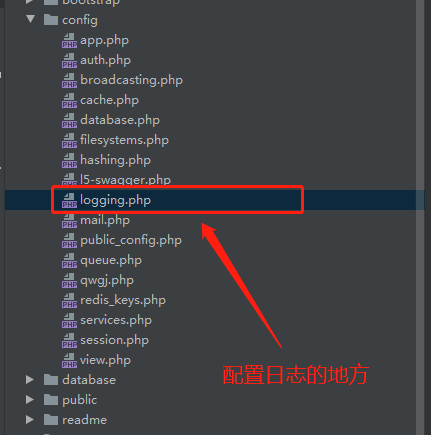
2) logging.php
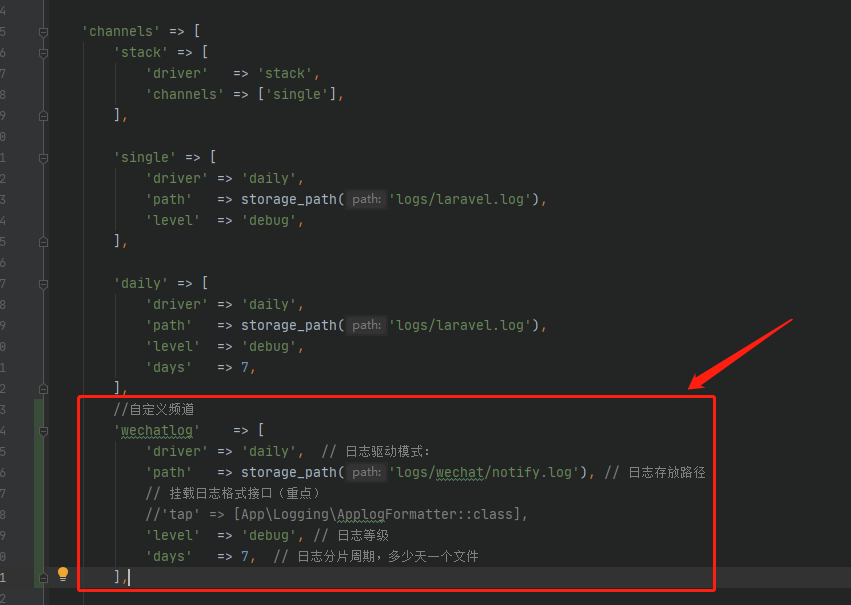
3) 使用参考
log::channel('wechatlog')->info("获取第三方平台component_access_token",['data'=>$data]);
然后执行请求完毕,就可以在storage/logs这个文件夹下面看到对应的日志记录
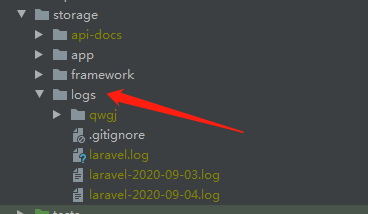
7、服务提供者
1)自定义服务提供者
在laravel里面,服务提供者其实就是一个工厂类。它最大的作用就是用来进行服务绑定。当我们需要绑定一个或多个服务的时候,可以自定义一个服务提供者,然后把服务绑定的逻辑都放在该类的实现中。在larave里面,要自定一个服务提供者非常容易,只要继承illuminate\support\serviceprovider这个类即可。
举个栗子
app/providers/appserviceprovider.php
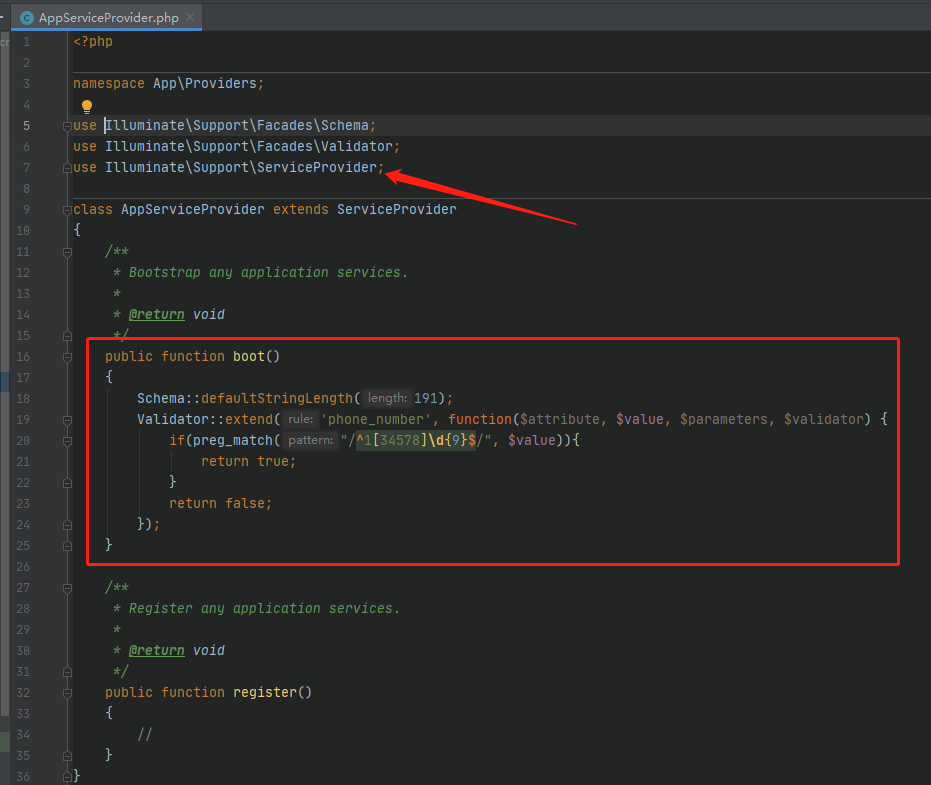
在这个举例里面,可以看到有一个register方法,这个方法是serviceprovider里面定义的。自定义的时候,需要重写它。这个方法就是用来绑定服务的。
2)laravel初始化自定义服务提供者的源码
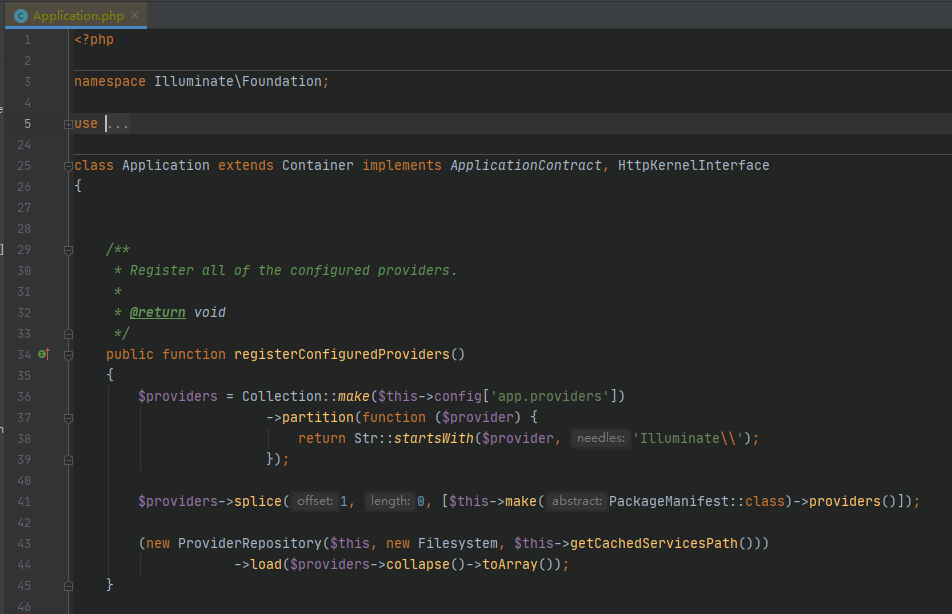
3)config/app.php
从上一步的源码也能看到,laravel加载自定义服务提供者的时候,实际是从config/app.php这个配置文件里面的providers配置节找到所有要注册的服务提供者的。
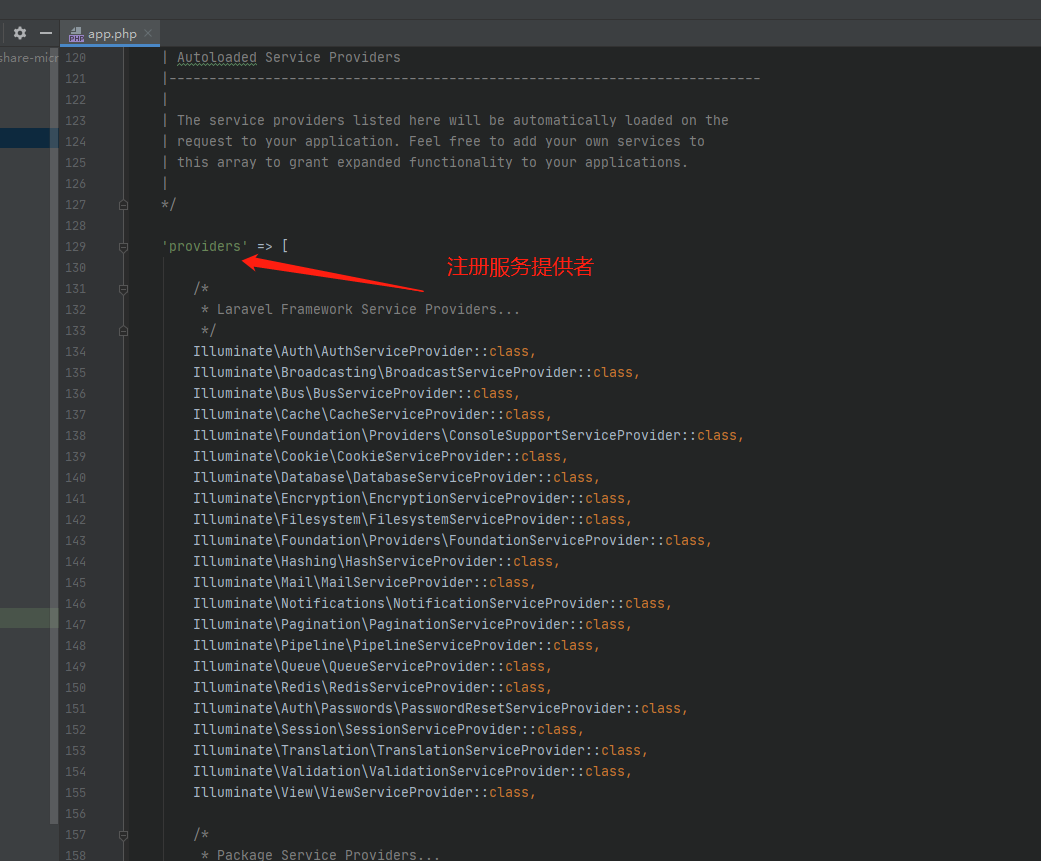
参考链接:https://blog.csdn.net/qqtaizi123/article/details/95949672
原文链接:https://www.cnblogs.com/hld123/p/13626173.html











